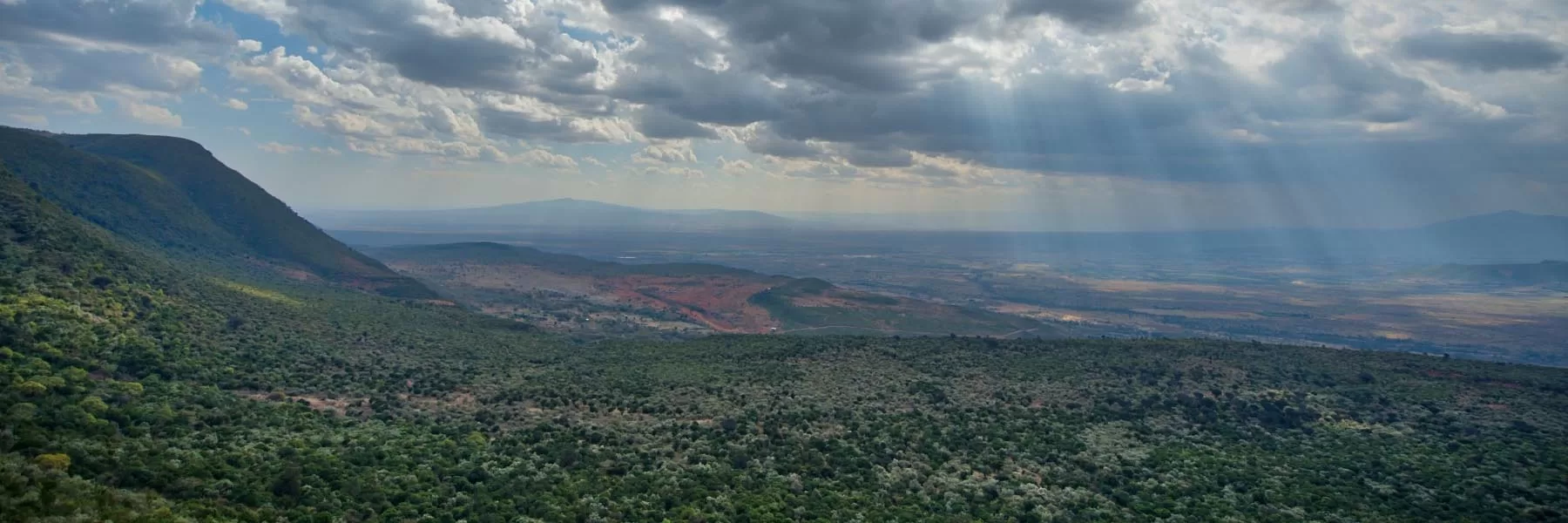The Great Rift Valley, Kenya is one of the most well-known rift valley systems on Earth. It is a geological and geographical feature that stretches from Lebanon to Mozambique. Much of it falls in Kenya, where it has split the country into two parts.

The Great Rift Valley, Kenya
The valley contains the world’s finest lakes, mountains, and plains. A visit here cannot miss experiencing a fascinating topographical feature of Kenya. This system runs 6,000 km and has become a distinguishing mark of Kenya. The valley is magnificent, showcasing spectacular scenery of lakes, mountains, and savannahs.
However, the Great Rift Valley also has an equally intriguing history that makes it humankind’s ancestral homeland today.
What is the Great Rift Valley?
The Great Rift Valley is a series of valleys that cut through much of eastern Africa and part of southeastern Asia. It refers to a massive land depression that was formed approximately twenty million years ago. It occurred due to two parallel fault lines that pulled apart.
The steep walls of the valley rise about 2000 metres in some places. Most parts of the valley are 30 to 100 kilometres wide. The Great Rift Valley has some of Africa’s most spectacular scenery, including lakes as well as active and extinct volcanoes.
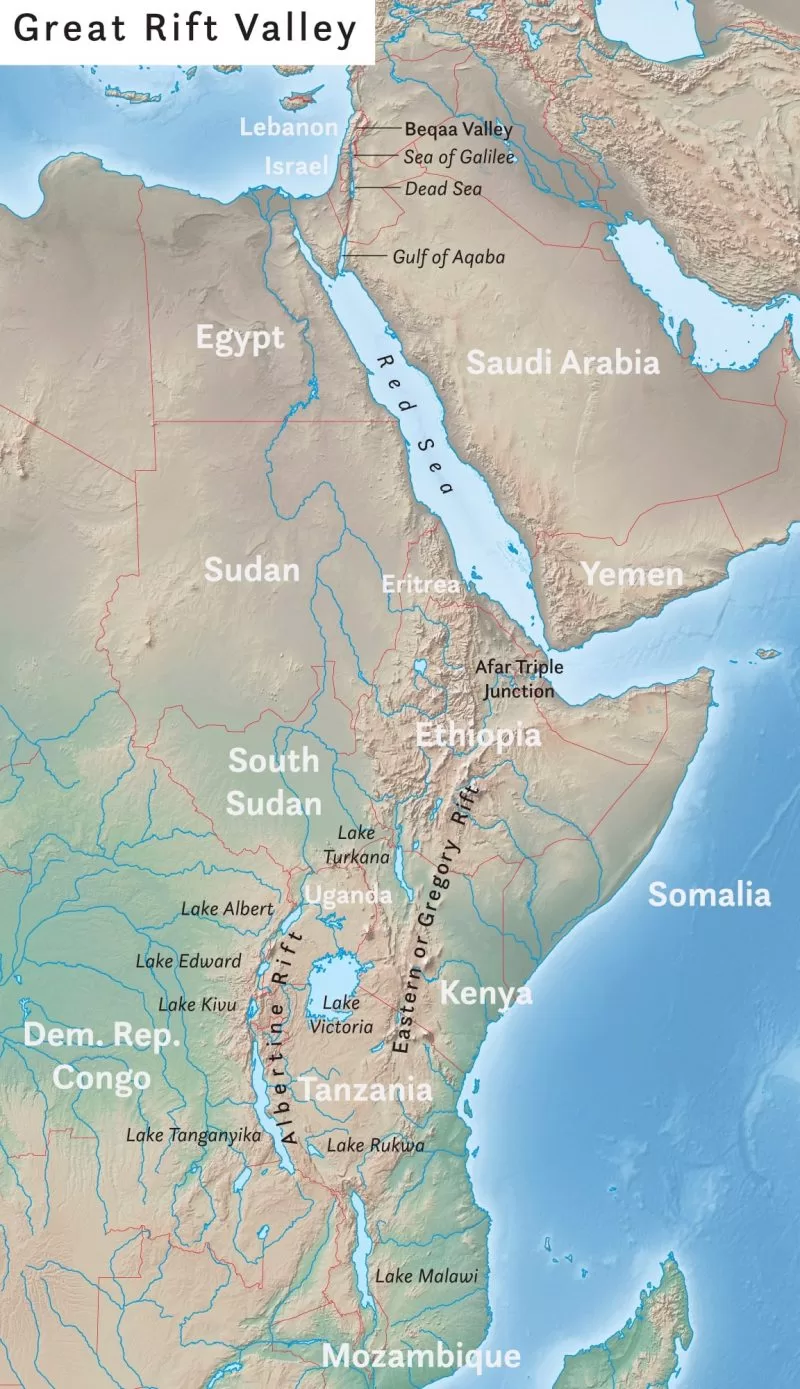
A map depicting the Great Rift Valley
The valley in Eastern Africa divides into the western and eastern branches. The western branch of the valley runs along the eastern border of Zaire. The earth’s deepest lakes, Lake Tanganyika and Lake Nyasa cover most of the section.
On the other hand, the valley’s eastern branch runs through the central parts of Ethiopia, Kenya, and Tanzania. Archaeologists have found some of the earliest known human remains here. The valley’s scale is so vast that photographs of the Earth taken from space clearly show it.
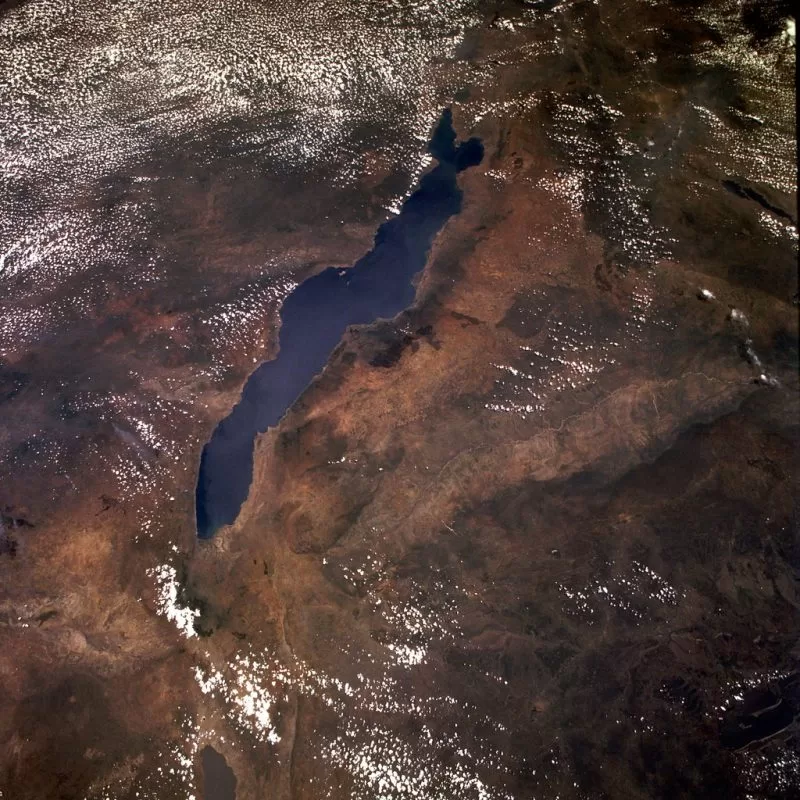
The Great Rift Valley captured from space
In Kenya, the north of Nairobi is where the valley is the deepest. Also scattered along the length of the Great Rift Valley in Kenya are seven lakes. As these lakes do not have an outlet to the sea, they tend to remain shallow and have a high mineral content. As a result, all but two of the Rift Valley lakes are undrinkable.
The formation of the Great Rift Valley
Scientists explain the formation of the Great Rift Valley with the help of plate tectonic theory. According to this theory, the earth’s outer shell consists of about 30 rigid sections of rock called plates.
Movement along the boundary between two plates is about 1 to 10 centimetres a year. As plates move, the boundaries may collide, spread apart, or slide alongside one another. Such movements, along with erosion and volcanic activity, have also helped form the valley.
It has been speculated that the rift will soon become deep enough to host a new ocean that will separate Eastern Africa from the rest of the African continent.
Exploration of the Great Rift Valley
The Royal Geographical Society sent an expedition to the valley region in search of the Nile’s source. Austrian geologist Eduard Suess formulated his theory of the Great Rift Valley with the help of detailed reports during that trip. In 1891, he published a paper that attributed Syria’s and Malawi’s geology and structural geography to interconnected movements on the Earth.
Over the years, John Walter Gregory, a British explorer, embarked on his explorations in East Africa. He confirmed the interpretations of Suess, who stated the tectonic origin of this valley. But Gregory also recognised similarities between the African Rift Valley and the geology of the Red Sea. He proposed that these landscapes are connected.
Later, Gregory incorporated these findings into his books, where he also coined the modern term for the Great Rift Valley, which is still in use for the entire African Rift. He connected the Great Rift Valley to the tectonic movements of the Earth.
The historical influence of the Great Rift Valley
The most recent immigrants to this region were the Maasai. They dominated the majority of the region and its surroundings and lived on both sides of the valley for centuries before the Europeans arrived. The European settlement forced the Maasai out of their former grazing land for much of the colonial era. They were confined to the southern reserve, which is now called Amboseli National Park.
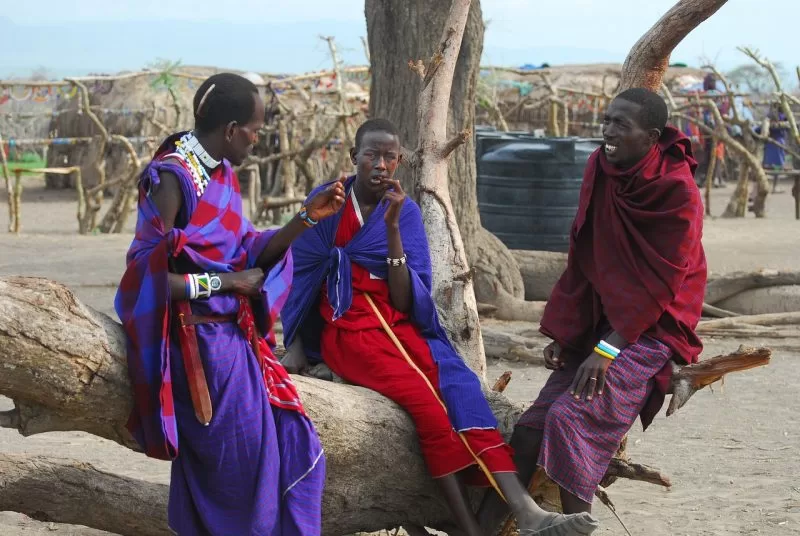
Maasai Men
Today, most of the Maasai people have returned to the valley. They are at their most conservative and traditional in Southern Kenya.
Places to see in the Great Rift Valley
The Great Rift Valley harbours some of central Kenya’s wildest and most picturesque scenery. There are exceptional lakes, twisting roads, majestic mountains, and diverse wildlife. Here are some of the top places you must see while visiting the Great Rift Valley:
Lake Baringo
Lake Baringo is a peaceful and beautiful oasis that boasts 470 species of birds. According to the sun’s position and the state of the sky, the lake showcases a range of colours, from coral to purple.
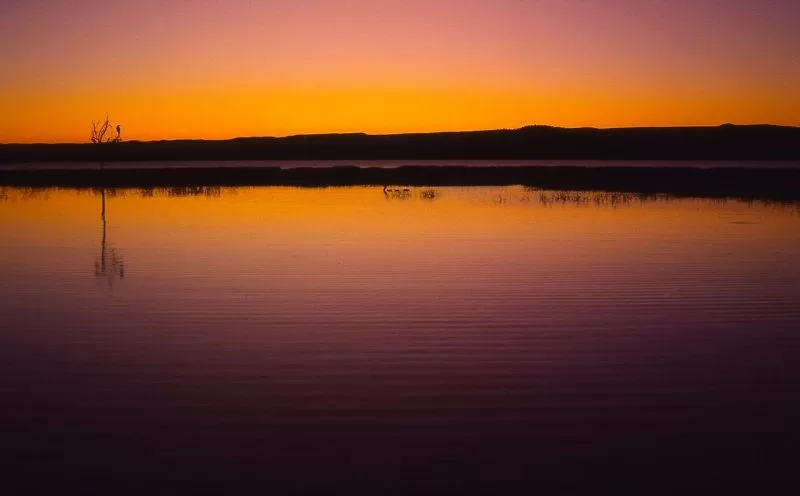
Early morning at Lake Baringo
Lake Bogoria
Lake Bogoria has saline and alkaline water and has become a favourite feeding ground for a number of lesser flamingos. One can easily spot animals such as greater kudu, hyena, buffalo, impala, zebra, Grant’s gazelle, and more from the lakeshore.
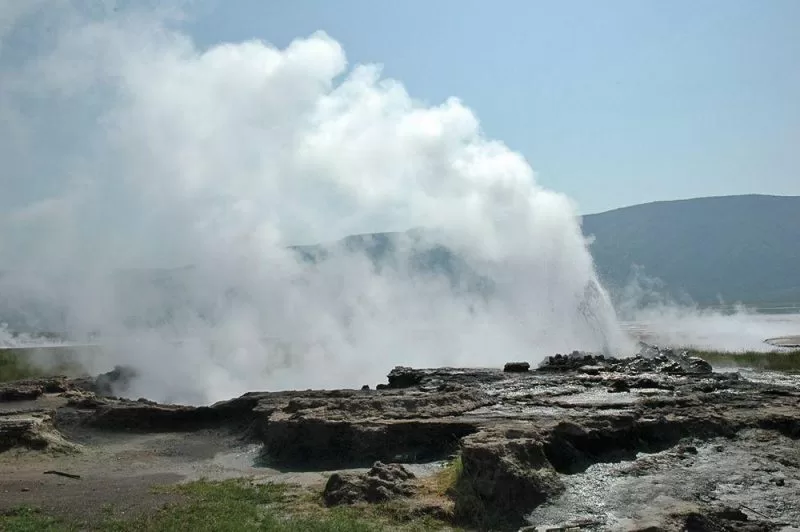
Hot Springs at Lake Bogoria
Lake Elmenteita
Lake Elmenteita is a shallow soda lake and offers various off-the-beaten-track destinations. The broken caldera walls of extinct volcanoes, resembling a human figure, surround the lake. In East Africa, Elmenteita is the only breeding ground for the great white pelican, which nests on a few rock islands in the lake.
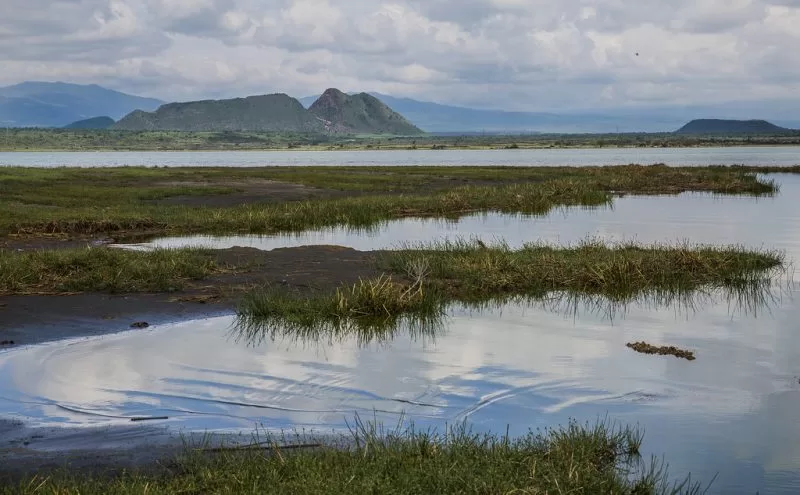
The beautiful Lake Elmenteita
Lake Naivasha
Lake Naivasha is one of the freshwater lakes in the Rift Valley. It is a picturesque lake, standing still against the backdrop of a mountain while islands of papyrus float on its water. It boasts unspoiled savanna and plenty of local wildlife. Hippos, giraffes, waterbucks, and zebras are the most frequent visitors to Lake Nakuru.
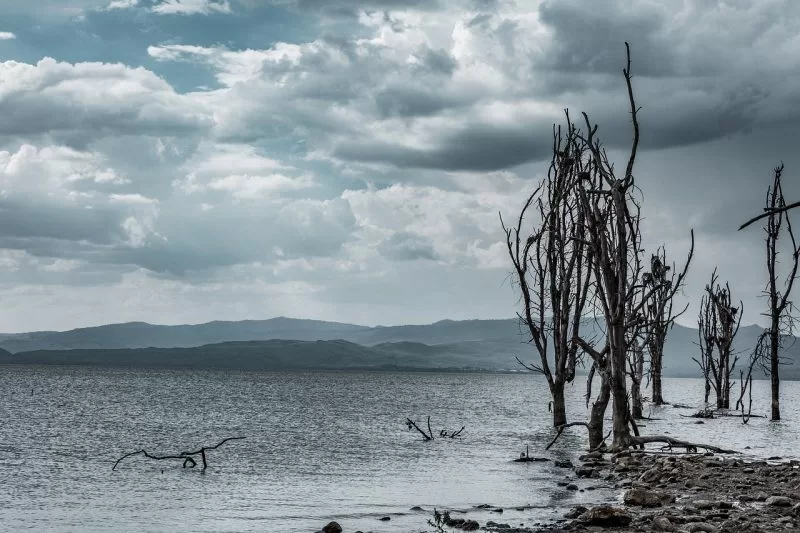
A cloudy day at Lake Naivasha
Lake Nakuru National Park
Lake Nakuru National Park is one of the main attractions for massive flocks of lesser and greater flamingos. These pink birds thrive in Lake Nakuru’s algae-rich and alkaline waters. Aside from various bird species, you can also observe animals such as endangered rhinos, Rothschild giraffes, lions, leopards, hyenas, and others.

A white rhino at the scenic Lake Nakuru National Park
Hell’s Gate National Park
The intense geothermal activities within its boundaries give Hell’s Gate National Park its name. It boasts spectacular vistas of the valley, including towering cliffs, gorges, scrub-clad volcanoes, and geothermal steam. The most common animals frequenting Hell’s Gate National Park are African buffalo, zebra, Thompson’s gazelle, and more.
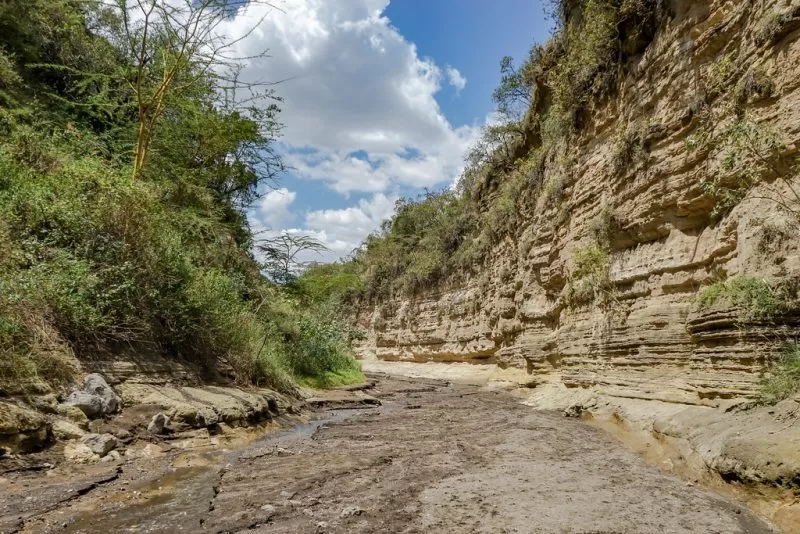
Hell’s Gate National Park
The Great Rift Valley remains a complicated system but an interesting geological wonder. Just like any other marvel, the Great Rift Valley should be at the top of your list while visiting Kenya.
Kenya’s Great Rift Valley: A Cultural Mosaic of Indigenous Communities
Kenya’s Great Rift Valley is one of the most fascinating regions in the world, characterised by a diverse landscape that stretches from Ethiopia to Tanzania. The region is home to several indigenous communities, each with its own unique culture, beliefs, and traditions, making it a cultural mosaic.
The Great Rift Valley was formed over millions of years, and it is one of the world’s most significant geological features. It is a vast trench that extends for more than 6,000 km, and it is dotted with numerous lakes, rivers, and hot springs. For centuries, the region’s fertile soil has made it an agricultural hub, earning it the reputation it has today.
The indigenous communities living in the Great Rift Valley have a deep connection to the land, which has shaped their way of life and culture. The Maasai people are one of the most well-known ethnic groups in the region, and they are known for their distinctive clothing and beadwork. They are also known for their cattle-rearing practices, which have sustained them for generations.
The Samburu people are closely related to the Maasai, and they also rely on cattle herding. They are known for their vibrant traditional dances and beadwork, which is an important part of their culture.
The Kikuyu people are the largest ethnic group in Kenya and are mainly agriculturalists. They have a rich cultural heritage that includes traditional music, folklore, and storytelling.
The Kalenjin people are predominantly farmers and herders, and they are known for their athletic prowess. They have produced some of the world’s top long-distance runners, including the famous marathoner Eliud Kipchoge.
The Turkana people live in the arid northern part of the Great Rift Valley and are pastoralists and fishermen. They are known for their unique hairstyles and colourful beads, which they use to adorn their bodies.
Despite the differences in their cultures, these communities share a strong sense of community and a deep connection to the land. For generations, they have lived in the region and developed unique traditions and practices that they have passed down from one generation to the next.
In recent years, the Great Rift Valley has become a popular tourist destination, attracting visitors from all over the world who come to experience its unique culture and breathtaking landscapes. The region offers a range of activities, from hiking and trekking to cultural tours and wildlife safaris.
In conclusion, the Great Rift Valley is a cultural mosaic of indigenous communities, each with its own unique traditions and practices. The region’s diverse landscape and fertile soil have sustained these communities for generations, shaping their way of life and culture.
The Great Rift Valley is truly a remarkable place, and it offers visitors a glimpse into the rich cultural heritage of Kenya’s indigenous communities.
If you loved reading this story, then subscribe to our blog here (it will ask to verify your email) to get inspiring travel stories and trivia delivered to your email. Stories about wildlife trivia, cultural experiences, curated luxury hotel lists, underrated places to travel, polar journeys and much more.


